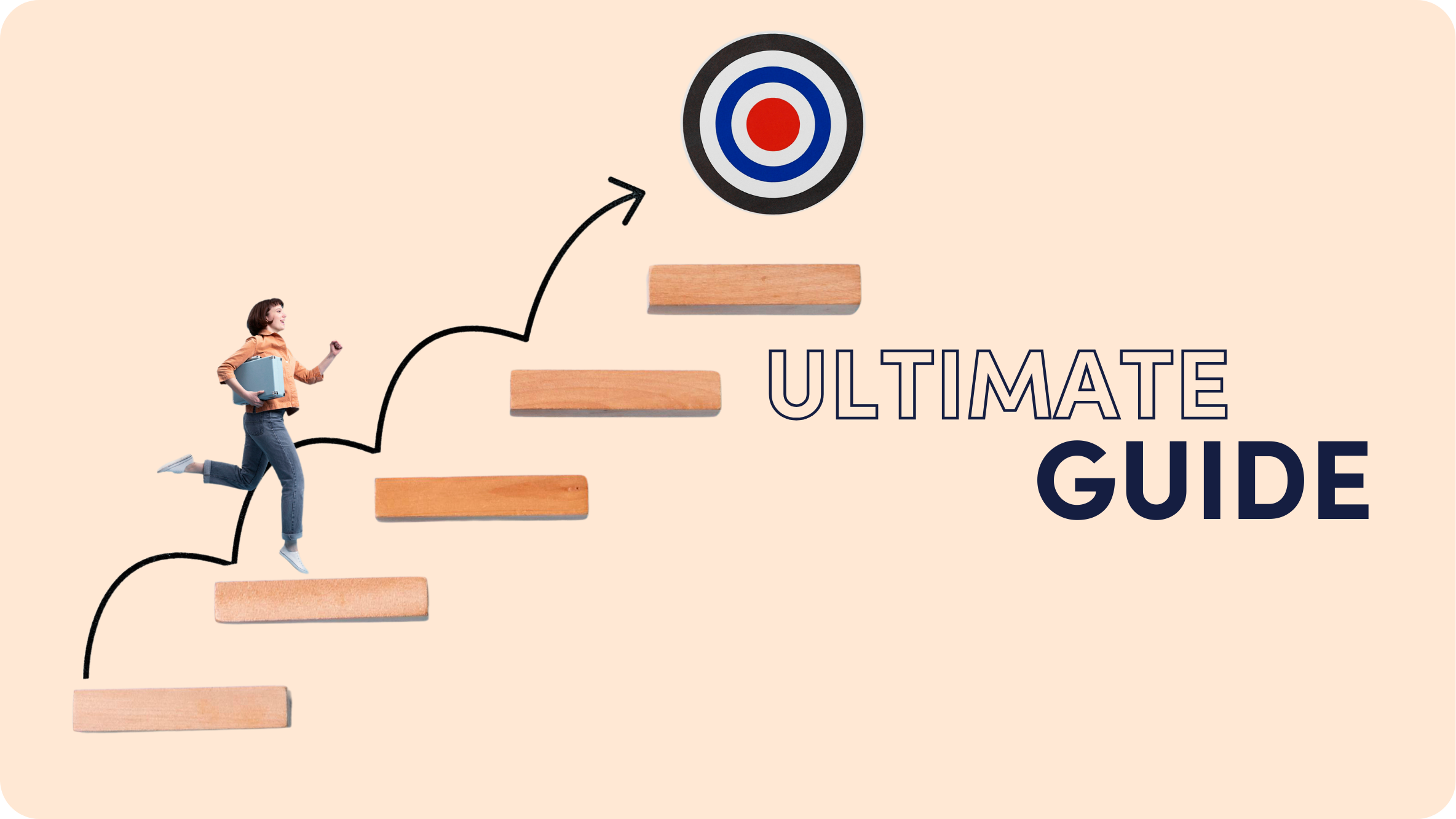What is Middle-of-Funnel Marketing and How to Succeed At It

Picture this: you’re at a crowded party, trying to make new friends. You know you need to start with some small talk (top-of-funnel), but what do you do once you’ve established a connection?
You don’t want to just blurt out your life story (bottom-of-funnel), but you also don’t want to bore them with the same old topics. Enter middle-of-funnel (MOF) marketing, the perfect balance between chit-chat and deep conversations.
In the marketing world, MOF is the stage where you’ve caught the attention of potential customers, but they’re not quite ready to make a purchase. It’s the sweet spot where you can build a meaningful relationship and guide them toward a conversion.
In this article, we’ll explore the world of middle-of-funnel marketing, sharing tips and tricks that will help you woo your customers and convince them that their life will be better with your product or service.
What is Middle-of-Funnel Marketing?
The middle-of-funnel (MOF) is where potential customers have moved beyond the initial awareness stage (TOF) and are now seriously considering your product or service. At this stage, customers are looking closely at your offering(s) and comparing it with your competitors. In other words, what they need is information to help them make an informed decision.
MOF is sometimes referred to as the “consideration” stage. A common mistake is to think of MOF as just a transitional stage between TOF and BOF – but this is not the case. It’s a unique stage that requires a unique set of strategies and tactics.
It plays a critical role in the customer journey. In the middle of the funnel, you need to grab the opportunity to educate, nurture, and build a relationship with your potential customers. The overall goal is to guide prospects toward the bottom of the funnel (BOF) at which point they’ll hopefully make a decision to purchase your product or service.
Middle-of-Funnel vs Top and Bottom-of-Funnel Marketing
To understand middle-of-funnel marketing, it’s important to distinguish it from the other stages of the funnel.
- Top-of-funnel (TOF) is the stage where potential customers become aware of your brand and offerings. It’s the stage where you cast the widest net, using broad targeting and messaging to reach a large audience. Even if you segment and target more focused markets at this stage, you’ll still get a wide range of people viewing your ads or content. Some will eventually become customers, but many will decide that they are not interested.
- Middle-of-funnel (MOF) is the middle stage between TOF and BOF. At this stage, potential customers are aware of your brand and have already expressed an interest in what you have to offer, otherwise, they wouldn’t have reached this stage. However, it’s likely that they’re not yet ready to make a purchase. Most prospects will be considering their options and looking for more information to help them make an informed decision.
- Bottom-of-funnel (BOF) is the stage at which potential customers are ready to make a purchase decision. At this stage, you use highly targeted messaging and sales tactics to convince customers to choose your product or service.
The MOF is a critical stage in the sales process as you have the opportunity to build a relationship with your potential customers, guiding them gradually toward the BOF. Providing them with the right information, building trust, and addressing their concerns, will help to increase the likelihood of conversion.
How Middle-of-Funnel Marketing Works
The main element of middle-of-funnel marketing involves creating content that speaks to your potential customers. It should give them detailed information about your offering, or provide them with some other kind of value to keep them engaged.
To achieve the best results, the content needs to be helpful and informative, without being too pushy or sales-y. People reading or watching your content should get the feeling that they are learning something valuable, not getting an aggressive sales pitch as this is more likely to put them off. Most consumers are pretty savvy and will respond much more positively to content that genuinely helps them to make the right decision.
As well as providing information about your offering, MOF marketing should also foster and build relationships. This can be done through personalized emails or social media messages. Ideally, you want your customers to be excited, or at least mildly motivated, to open your message when it lands in their inbox. Building a relationship with prospects will create trust and make them more likely to purchase from you when the time comes.
How to Use Content for MOF Marketing
The key to achieving good results from content marketing is to create a strategy by following five tried and true steps.
- Identify your audience: You can’t create engaging content without understanding who your audience is and what they’re interested in. Start by researching the interests, needs, challenges, and pain points. You can find this out by accessing online marketing data, using surveys, focus groups, and other forms of market research.
- Create valuable content: Once you know your audience, the next step is to plan content that will give them the information they need to make an informed decision. Aim for content that is informative and relevant to their needs, as nobody will thank you for wasting their time. The most commonly used content types for MOF marketing include articles, blog posts, ebooks, videos, webinars, and email newsletters.
- Nurture your leads: Now that you have some qualified leads or prospects in your funnel, it’s time to use some targeted messaging and highly personalized content to nurture them towards a sale. You can use email marketing, ad retargeting, and other methods to keep your brand at the top of people’s minds.
- Build trust and credibility: In today’s world of mass advertising and media saturation, one of the most important things any brand can do is build up trust and credibility. If you can establish trust by being authentic and genuine, then you’re much more likely to get loyal customers. Social proof is one of the best ways to demonstrate your trustworthiness and the value of your offering, so make sure to include testimonials, reviews, endorsements, and case studies in your content wherever possible.
- Evaluate and adjust: Don’t think of MOF marketing as a static thing. To get the best results you need to be as dynamic as possible. This involves constantly monitoring, measuring, and adjusting your strategies as you go. Analyzing metrics such as conversion rates, engagement rates, and sales-qualified leads will help you to optimize your middle-of-funnel marketing strategy.
3 Tactics for Middle-of-Funnel Marketing
1. Create targeted content
The main aim of MOF marketing is to connect with your potential customers on a personal level. Obviously, your content needs to be relevant and interesting, but it also needs to offer value. You need to ensure that the content clearly communicates the benefits and value of your offering, as well as subtly encouraging them to take action.
For example, let’s say that you work for a company selling safety equipment to construction workers. The kind of content you provide may include:
- Tips to identity safety hazards
- How to develop a safety plan or undertake risk assessments
- How to select the right kind of safety equipment
- Safety training best practices
In other words, the content you offer needs to – be relevant, offer value, be interesting, and encourage action.
The encouraging action part usually comes at the end of a piece of content in what is known as a ‘call-to-action’. This may be a request for the person to sign up for a free trial, book a demo, or make a direct purchase.
2. Segment your audience
Segmenting your audience means targeting your marketing efforts at different groups of people. You can segment your audience according to different characteristics such as interests, needs, and behaviors. Once you have the different segments, you can tailor your messaging to each group and deliver content that resonates with them directly. In marketing circles, it is generally agreed that segmenting your audience leads to a higher ROI as your content will be focused and attract more conversions.
For example, imagine that you sell fitness equipment such as cardio machines, weights, and accessories. Within your overall audience, there are different groups of people who will respond better to different types of content, such as:
- Gym enthusiasts – how to get the most out of gym workouts, specialized training programs, insights into workout regimes
- Home fitness fans – recommendations on compact and versatile equipment, home workout routines
- Fitness beginners – how to get started, selecting the right equipment
- Athletes – how to train for events, tips on nutrition
- People with mobility issues – guidance on low-impact exercises and best equipment
Providing highly targeted content that speaks to people’s unique needs helps to establish your brand as a trusted resource. When done properly, this should improve engagement and drive sales.
3. Personalize your messaging
Personalization takes things one step further than audience segmentation. It refers to customizing your sales and marketing messages to each individual customer. This could mean anything from simply referring to them by their first name in an email subject line or SMS to creating content tailored directly to their individual needs or desires. A good way to personalize content is to create a ‘customer avatar’ or ‘persona’.
For example, imagine that you sell nutritional supplements, such as vitamins, protein powder, and pre-workout supplements. After doing some market research, you may come up with several customer personas. Here are two examples:
- Tom is a 45-year-old man who is interested in building muscle and improving his athletic performance. He is currently taking a pre-workout supplement and a BCAA supplement but is looking for additional supplements that can help him achieve his goals. You can create personalized content that addresses Tom’s needs such as muscle building and athletic performance. You could offer him supplements that are tailored to his goals, such as protein powder, and provide information on how to use it effectively.
- Jenny is a 35-year-old mother who is interested in losing weight and increasing her energy levels. She is currently taking a multivitamin but is looking for additional supplements that can help her reach her goals. You could create email campaigns that address Jenny’s specific needs, such as weight loss and energy. You could offer her supplements that are tailored to her goals, such as a caffeine supplement, and provide information on how to use it effectively.
Applying these customer avatars helps you to personalize your content, demonstrate that you understand their unique needs, and offer solutions that help.
Metrics: How to Measure Middle-of-Funnel Campaigns
If you want to maximize the effectiveness of your middle-of-funnel campaigns, then you need to measure and monitor data. Tracking and analyzing the following metrics will help you to make data-driven decisions to improve your marketing ROI.
- Engagement Rates: As middle-of-funnel marketing involves content, tracking how well people interact with your content is important. Engagement rates may include data on how long people spend reading your blogs, watching your videos, or sharing your social media posts. Studying engagement rates can highlight which pieces of content resonate with your audience and which do not.
- Conversion Rates: Conversion rates measure how many people complete the desired action after engaging with your content, such as signing up for an email newsletter, downloading a white paper, contacting you, or making a direct purchase. In this way, conversion rates let you know how well your MOF campaigns guide prospects toward the next step in the funnel.
- Time Spent on Site: Measuring how long people actually spend on your website can indicate how well they engage with your content.
- Lead Quality: This measures how well your middle-of-funnel content generates leads that match your ideal customer profile. If you generate leads that aren’t a good match for your product or service, you probably need to adjust your messaging or targeting.
- Cost per Acquisition (CPA): Cost per Acquisition measures the cost-effectiveness of your middle-of-funnel campaigns. By helping you to understand how much you spend to convert each prospect into a paying customer, you can make decisions about which campaigns to continue with and which to abandon.
- Return on Investment (ROI): Return on Investment measures how much of a financial return you get from your middle-of-funnel marketing campaigns compared to the amount you put in. ROI helps you to see which campaigns provide the best financial return and decide where to allocate your marketing spend.
Examples of Effective Middle of Funnel Marketing Campaigns
Airtable
Airtable’s Stories blog is an excellent example of how brands can leverage the power of customer experiences to support their buyer’s research and evaluation process. By highlighting real-world customer stories, Airtable’s blog provides potential customers with valuable insights into how their product can be used and how it can solve similar problems.
Hello Inside
Hello Inside, a med-tech startup, achieved a 40% lower cost-per-acquisition compared to social media by partnering with OptimusQ and using Outbrain’s Conversion Bid Strategy and Contextual Targeting tools. The campaign generated over 400 newsletter registrations and a 300% growth in web traffic. Outbrain’s platform was a cost-effective channel for reaching and engaging new users who expressed genuine interest, making it a useful tool for middle-of-funnel marketing. By driving traffic across relevant sections, Hello Inside engaged with quality audiences and moved them further down the sales funnel.
Nurture More Conversions With Strong Middle-Of-Funnel Marketing
Middle-of-funnel (MOF) marketing is a crucial stage in the customer journey that requires a unique set of strategies and tactics. MOF involves creating content that is helpful and informative, without being too sales-y or pushy. The content should speak directly to potential customers, fostering and building relationships with them to establish trust and credibility.
To achieve good results from MOF marketing, it’s important to create a strategy that identifies your audience, creates valuable content, nurtures your leads, builds trust and credibility, and constantly evaluates and adjusts your approach.
The top three tactics for effective MOF marketing include creating targeted content, segmenting your audience, and personalizing your messaging. Finally, tracking and analyzing engagement rates, conversion rates, time spent on site, lead quality, cost per acquisition (CPA), and return on investment (ROI) will help you to make data-driven decisions and improve your marketing ROI.
Want to learn more about the marketing funnel? Check out our articles about Top-Funnel Marketing and Bottom-Funnel Marketing, as well as the Guide to Full-Funnel Marketing.








